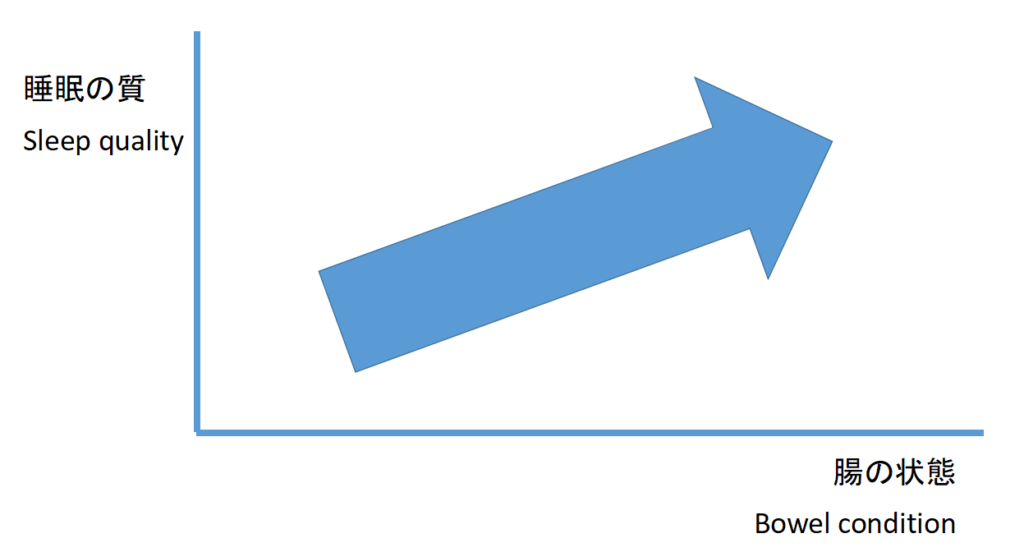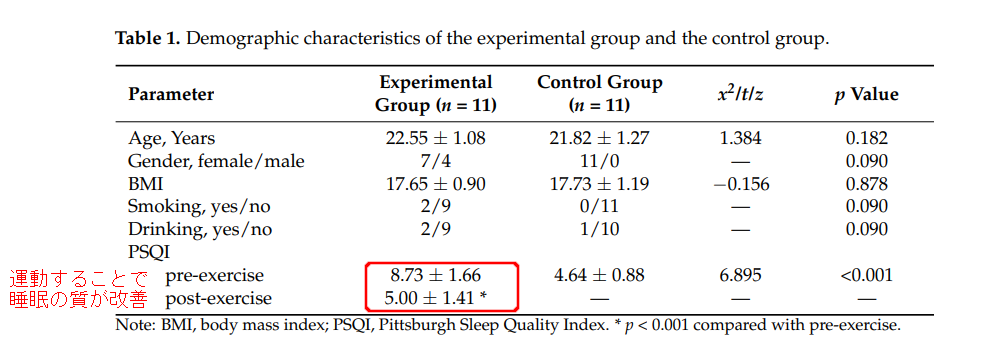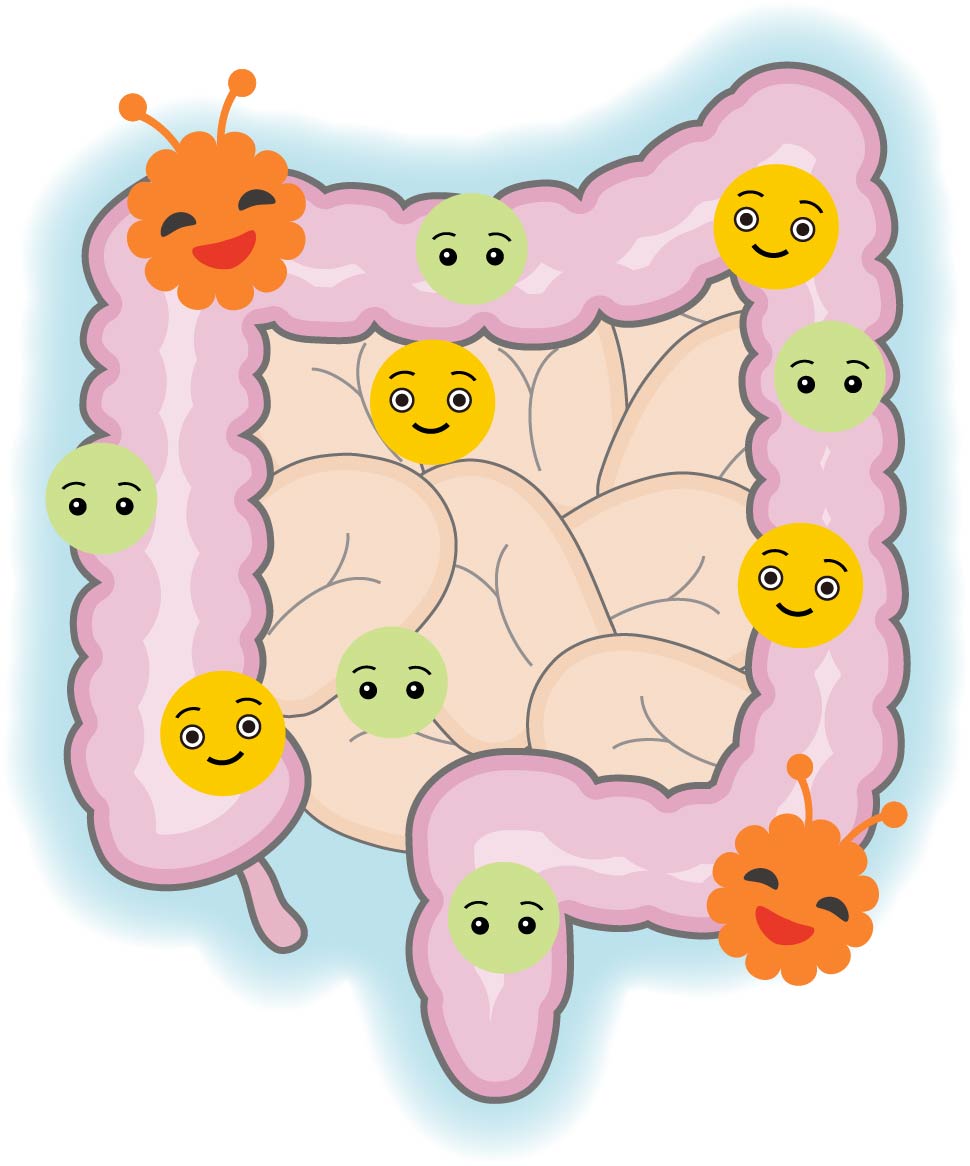Exercise can make the intestinal flora better.
The research paper Exercise Interventions Improved Sleep Quality through Regulating Intestinal Microbiota Composition is cited and referred to in this report.
Sleep is closely related to the condition of the bowel. People with poor bowel movements have poor sleep quality, while those with good bowel movements have good sleep quality. Intestinal bacteria aid in digestion, facilitate absorption of nutrients, produce multiple vitamins and amino acids, and neutralize toxins. This is also important for the immune system. So how can we change our gut environment? Here is a paper that shows that exercise three times a week can improve the intestinal environment.

Related Articles
method
The experimental and control groups each received an 8-week exercise intervention. We analyzed the relationship between the changes in the intestinal flora of the experimental and control groups before and after the exercise intervention and the improvement in sleep quality. Fluctuations in intestinal flora were examined by testing the identification of microorganisms collected from stool samples to determine what types of microorganisms were present and in what proportions.
experimental subject
Eleven college students who were thin (BMI ≤ 18) and had poor sleep (Pittsburgh Sleep Quality Index (PSQI) ≥ 7) were selected as experimental subjects and an additional 11 healthy subjects were recruited as control subjects. In total, 22 subjects.
BMI is a standard to evaluate obesity. According to the World Health Organization (WHO), BMI less than 16 is too thin, BMI 16-16.99 is thin, BMI 17-18.49 is underweight, BMI 18.50-24.99 is normal, BMI 25-29.99 is preobese, 30-34.99 is obese (1st degree), 35-39 .99 is obese (2nd degree), and 40 and above is obese (3rd degree). In addition, the Pittsburgh Sleep Quality Index is expressed as a score from 0 to 21, with a score of 6 or higher being diagnosed as a poor sleep group. Therefore, it can be said that those who were selected for the experiment were the lean sleep-deprived group.
motion
The patients were asked to maintain their daily routines and exercise according to an 8-week schedule. The exercise consisted of jogging 4 to 7 km three times a week at a speed of 8 to 9 km/h. Over the course of one month, the patients ran 48 to 84 km.
Sleep quality and stool study
Subjects were interviewed before and after exercise using the Pittsburgh Sleep Quality Index and stool samples were collected.
Stools collected from the experimental group (11 lean, poor sleepers) before exercise were designated as group E. Stools collected from the experimental group after exercise were designated as group T. On the other hand, stools collected from healthy subjects (11 subjects) before exercise were designated as group C1, and stools collected from healthy subjects after exercise were designated as group C2. In order to eliminate as much as possible the influence of lifestyle on the intestinal bacterial flora, three stool samples were collected from each person, one sample being obtained in one week.
| Before exercise | post-exercise | |
| Experimental group (thin and poor sleepers) | E | t |
| Control group (healthy subjects) | C1 | C2 |
result
Pittsburgh Sleep Quality Index (PSQI) before and after exercise
The Pittsburgh Sleep Quality Index (PSQI) in the experimental group was lower after exercise than before. A Pittsburgh Sleep Quality Index (PSQI) score of 6 or higher is diagnostic of sleep disturbance, but after exercise the PSQI score was lower than 6. (There are no demographic differences between the experimental and control groups, such as age or BMI.) After the exercise intervention, sleep quality in the sleep-disturbed group improved, indicating that their gut flora had changed. Another study showed that sleep quality in college students was closely correlated with their participation in sports activities, and that the incidence of sleep disturbances was significantly lower in college students who regularly played sports than in students who did not play sports.

Microorganisms present in stool and their percentage
All detected intestinal flora belonged to Firmicutes, Proteobacteria, Bacteroidetes, and Actinobacteria. the main bacteria in group E (experimental group, before exercise) included Firmicutes (70.44%), Bacteroidetes ( 19.79%), Proteobacteria (6.00%), and Actinobacteriotia (3.28%). In the C1 group (control group, before exercise), Firmicutes (67.50%), Bacteroidetes (26.89%), Proteobacteria (3.22%), and Actinobacteriotia (2.08%) were the top four microbial groups.
After exercise, the top four microbial groups were the same four groups as before exercise, but their respective abundance ratios changed: Firmicutes (81.96%) and Actinobacteriotia (8.21%) in group T (experimental group, after exercise) and Firmicutes (71.84 ) and Actinobacteriotia (4.22%) in the C2 group (control group, post-exercise), indicating an increase in the percentage of Firmicutes (71.84%) and Actinobacteriotia (4.22%) present. On the other hand, the percentage of Bacteroidetes (6.99%) and Proteobacteria (2.59%) in group T (experimental group, after exercise) and Bacteroidetes (20.32%) and Proteobacteria (3.17%) in group C2 (control group, after exercise) were found to have decreased. The percentage of Bacteroidetes was decreased.
The percentages of Firmicutes and Actinobacteria increased after exercise, while the percentages of Bacteroidetes and Proteobacteria decreased after exercise.
| Firmicutes | Bacteroidetes | Proteobacteria | Actinobacteria | ||
| experimental group | Pre-exercise E | 70.44% | 19.79% | 6.00% | 3.28% |
| Post-exercise T | 81.96% | 6.99% | 2.59% | 8.21% | |
| control group | Pre-exercise C1 | 67.50% | 26.89% | 3.22% | 2.08% |
| Post-exercise C2 | 71.84% | 20.32% | 3.17% | 4.22% |
Organisms are classified by kingdom, phylum, order, family, genus, and species, with kingdom being the largest taxonomic group and species being the smallest. For example, the cypress, a tree, differs from the wolf on the level of the plant kingdom and the animal kingdom. Wolves and coyotes are different species, but belong to the same taxon, Canis lupus, at the genus level.
The microorganisms just mentioned are classified at the phylum level, which is a fairly large (upper level) taxon.
Next, microorganisms were analyzed at the genus level. The results showed that in group E (experimental group, %)の3属が優勢であることが分かりました。C1群(対照群・運動前)では、Bacteroides属(13.80% exercise), %)の3属が優勢であることが分かりました。C1群(対照群・運動前)では、Bacteroides属(13.80% were predominant: Faecalibacterium (13.80 %)、Agathobacter(10.96%, and Megamonas (5.77); in %)の3属が優勢であることが分かりました。C1群(対照群・運動前)では、Bacteroides属(13.80% ), Prevotella (10.96) %)、Subdoligranulum属(4.45% ) (Figure 1B). Next are the results after exercise: in group T (experimental and post-exercise), Faecalibacterium (18.30 %)、Blautia(9.95% ) and Subdoligranulum (4.45) %)の順で増加し、Agathobacter(6.95% ), Bacteroides (4.08) %)、Prevotella(0.53% In group C2 (control and post-exercise), Agathobacter (12.91) %)とBlautia(7.69% ) increased while Bacteroides (8.48%) decreased.
| Faecalibacterium | Agathobacter | Megamonas | Blautia | Subdoligranulum | Bacteroides | Prevotella | |
| Group E | 13.80% | 10.96% | 5.77% | ||||
| T group | 18.30% | 6.95% | 9.95% | 4.45% | 4.08% | 0.53% | |
| C1 group | 4.45% | 13.43% | 10.94% | ||||
| C2 group | 12.91% | 7.69% | 8.48% |
Statistical analysis of the abundance of microorganisms showed that there was a difference between group E (experimental group, before exercise) and group C1 (control group, before exercise). Regarding the effect of exercise, there was no significant effect on the diversity of intestinal flora in the healthy control group students, but the effect was significant in the experimental subjects with sleep disorders.
These results indicate that the gut microbiota flora of poor sleepers and healthy subjects are different, and that exercise alters the gut microbiota flora.
Existing studies have shown that people who exercise more frequently have a higher diversity of intestinal flora, especially of the genus Faecalibacterium. It is known to produce short-chain fatty acids such as butyric acid through fermentation of dietary fiber. It has also been found that insomniacs have fewer microorganisms belonging to Firmicutes, and that an increase in Blautia and Ruminococcus, which belong to Firmicutes, contributes to better sleep quality. Several studies have elucidated that microorganisms produce neurotransmitters related to sleep and wakefulness and may influence sleep quality through the brain-gut axis.
At the genus level, Blautia showed differences before and after the exercise intervention. blautia has probiotic properties, producing high concentrations of short-chain fatty acids such as butyrate in vivo and preventing recent pathogenic infections. agathobacter is another microorganism that influences sleep quality. Its metabolites include butyrate, acetate, hydrogen, and lactate, which play an important role in intestinal physiology. Some reports suggest that butyrate-producing bacteria and butyrate-related metabolites are associated with melatonin. The microorganism Eubacterium hallii also produces short-chain fatty acids. Moreover, this microorganism improves insulin tolerance and energy metabolism.
If you suffer from insomnia, exercise and work to transform your intestinal bacterial flora. In addition, in order for the intestinal bacteria to produce short-chain fatty acids such as butyric acid, they need fiber to feed the bacteria. Don’t forget to include fiber in your diet. Dietary fiber is found in rakkyo, barley, seaweed, mushrooms, soybeans, and even vegetables such as cabbage and radishes. The recommended daily intake in Japan is 21 g for adult men and 18 g for adult women, but in reality, adult men and women consume about 17.5 g and 14.5 g, respectively, which is insufficient. As for eating large quantities of salad, there is no such thing as large quantities. The easiest way is to buy commercially available dietary fiber such as indigestible dextrin or inulin, dissolve it in a liquid, and drink it. If you want to be safer, you can increase your intake by adding brown rice to white rice. Consuming fruit after a meal is also recommended. Do you peel an apple and eat it? If you eat it with the peel, you will increase your fiber intake. It does not take much effort if you use a spoon to scoop the contents of a kiwi. By all means, be creative and actively consume it.


コメント